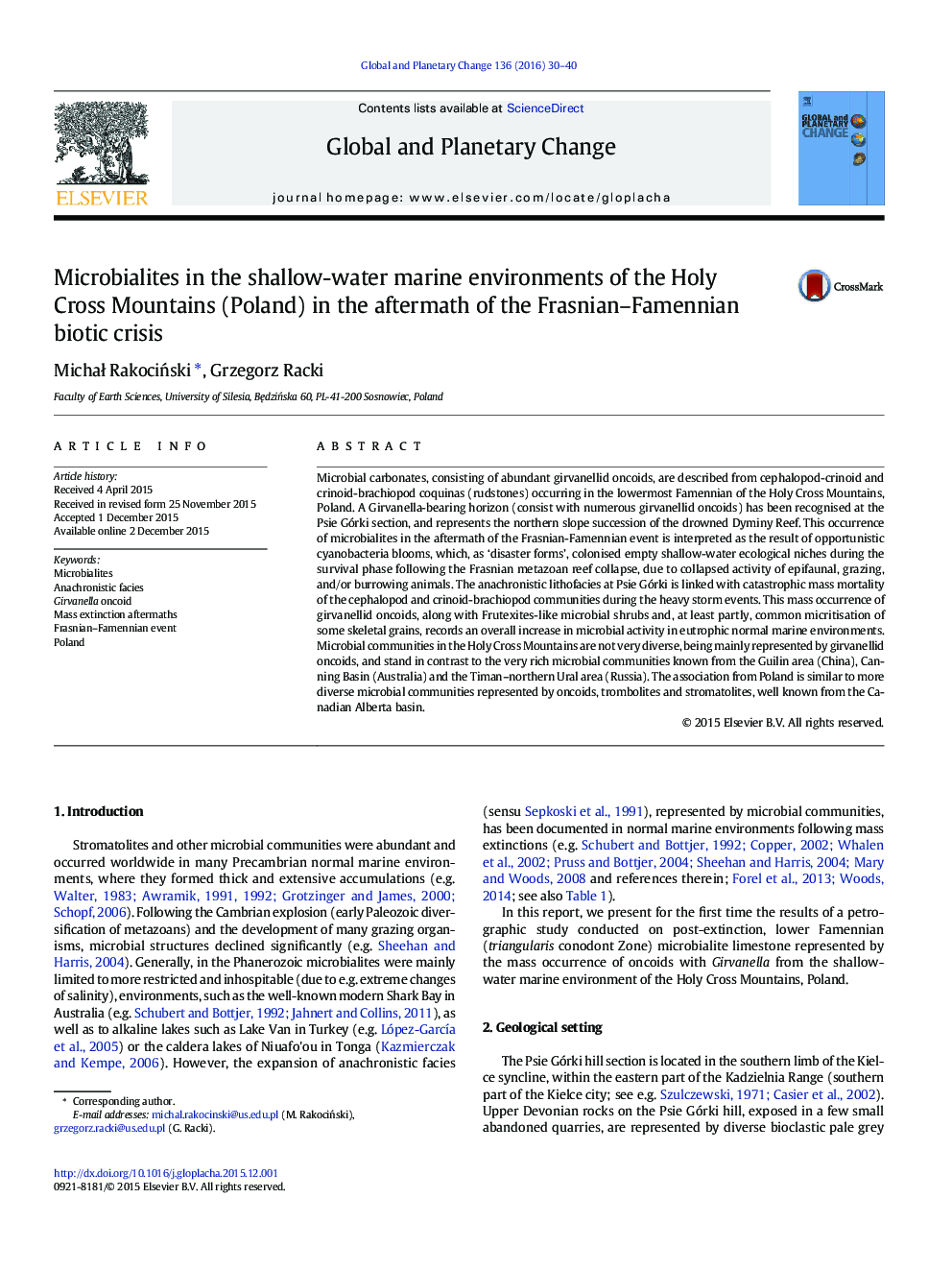| Article ID | Journal | Published Year | Pages | File Type |
|---|---|---|---|---|
| 6347932 | Global and Planetary Change | 2016 | 11 Pages |
Abstract
Microbial carbonates, consisting of abundant girvanellid oncoids, are described from cephalopod-crinoid and crinoid-brachiopod coquinas (rudstones) occurring in the lowermost Famennian of the Holy Cross Mountains, Poland. A Girvanella-bearing horizon (consist with numerous girvanellid oncoids) has been recognised at the Psie Górki section, and represents the northern slope succession of the drowned Dyminy Reef. This occurrence of microbialites in the aftermath of the Frasnian-Famennian event is interpreted as the result of opportunistic cyanobacteria blooms, which, as 'disaster forms', colonised empty shallow-water ecological niches during the survival phase following the Frasnian metazoan reef collapse, due to collapsed activity of epifaunal, grazing, and/or burrowing animals. The anachronistic lithofacies at Psie Górki is linked with catastrophic mass mortality of the cephalopod and crinoid-brachiopod communities during the heavy storm events. This mass occurrence of girvanellid oncoids, along with Frutexites-like microbial shrubs and, at least partly, common micritisation of some skeletal grains, records an overall increase in microbial activity in eutrophic normal marine environments. Microbial communities in the Holy Cross Mountains are not very diverse, being mainly represented by girvanellid oncoids, and stand in contrast to the very rich microbial communities known from the Guilin area (China), Canning Basin (Australia) and the Timan-northern Ural area (Russia). The association from Poland is similar to more diverse microbial communities represented by oncoids, trombolites and stromatolites, well known from the Canadian Alberta basin.
Related Topics
Physical Sciences and Engineering
Earth and Planetary Sciences
Earth-Surface Processes
Authors
MichaÅ RakociÅski, Grzegorz Racki,
